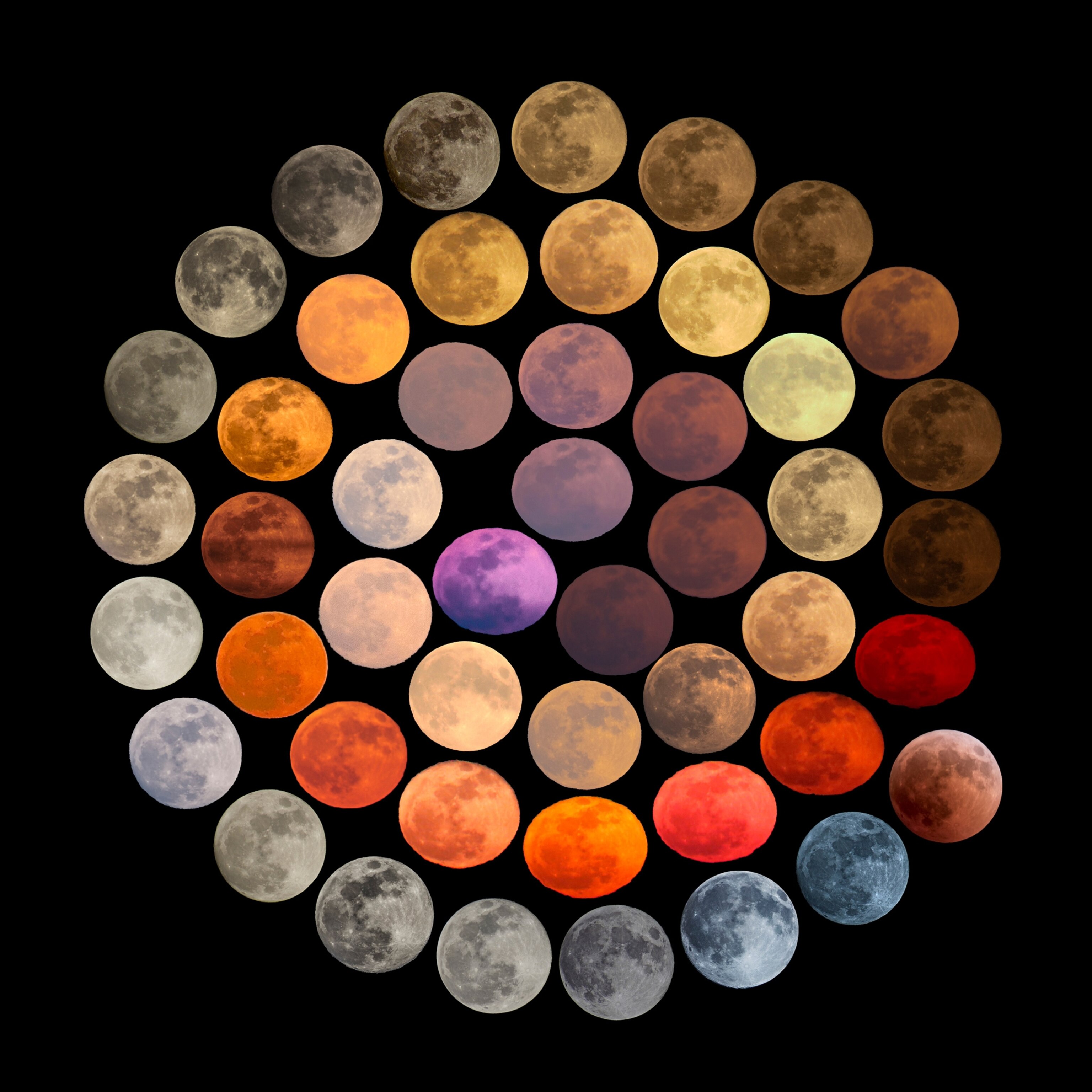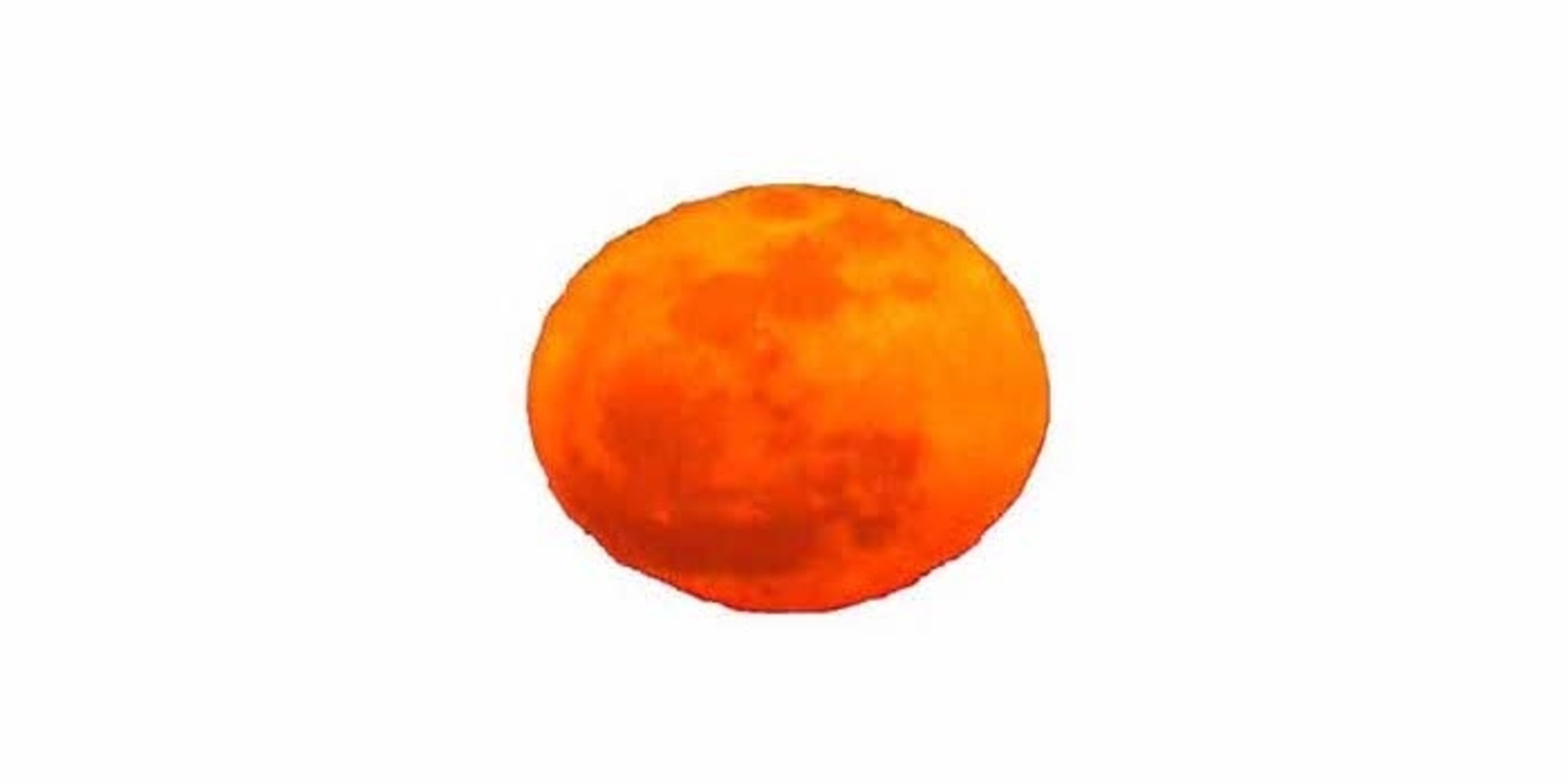A purple moon? See 48 stunning lunar hues
After 10 years of taking pictures of full moons, a photographer has captured lunar light in a rainbow of colors.

The moon’s actual color is an off-white brown-gray when its dusty surface is sunlit. But Earth’s atmosphere modifies our views of the moon, altering colors and shape. Italian photographer Marcella Giulia Pace, who has captured lunar variations for 10 years, chose 48 of her images to compare in this spiral montage.
The varied colors appear when the moon is seen or photographed through stratified and irregular gas layers of Earth’s atmospheric blanket. Tiny air molecules in the layers scatter light that hits them, and their structure causes blue light to scatter more readily than red or orange. (Explore the atlas of moons.)
When, for example, Pace photographs the moon through the densest air—as it rises and as it sits just above the horizon—this phenomenon is especially intense, glowing more red or orange. Other materials in the atmosphere—water droplets, dust, wildfire smoke—also influence the path of light and affect the moon’s hue, and those colors are specific to the suspended materials themselves.
The moon’s apparent shape also is altered as the light it emits travels through the stratified air. Because the atmosphere nearest Earth’s surface is much denser than high above, the path of light traveling those varied densities will bend. The result: The light’s source appears as a squished ellipse instead of a lunar disk.
Going purple

The daytime sky’s scattered blue light tints a just risen color-altered red moon (March 12, 2017).
Getting squished

Light passing through varied atmospheric densities is bent, changing how the moon’s shape appears (February 15, 2014).
Catching shade

During a total lunar eclipse, when the moon is in Earth’s shadow, bent red light falls on its surface (July 27, 2018).
Related Topics
You May Also Like
Go Further
Animals
- Orangutan seen using plants to heal wound for first timeOrangutan seen using plants to heal wound for first time
- What La Palma's 'lava tubes' tell us about life on other planetsWhat La Palma's 'lava tubes' tell us about life on other planets
- This fungus turns cicadas into zombies who procreate—then dieThis fungus turns cicadas into zombies who procreate—then die
- How can we protect grizzlies from their biggest threat—trains?How can we protect grizzlies from their biggest threat—trains?
Environment
- What La Palma's 'lava tubes' tell us about life on other planetsWhat La Palma's 'lava tubes' tell us about life on other planets
- How fungi form ‘fairy rings’ and inspire superstitionsHow fungi form ‘fairy rings’ and inspire superstitions
- Your favorite foods may not taste the same in the future. Here's why.Your favorite foods may not taste the same in the future. Here's why.
- Are the Great Lakes the key to solving America’s emissions conundrum?Are the Great Lakes the key to solving America’s emissions conundrum?
- The world’s historic sites face climate change. Can Petra lead the way?The world’s historic sites face climate change. Can Petra lead the way?
History & Culture
- Meet the ruthless king who unified the Kingdom of Hawai'iMeet the ruthless king who unified the Kingdom of Hawai'i
- Hawaii's Lei Day is about so much more than flowersHawaii's Lei Day is about so much more than flowers
- When treasure hunters find artifacts, who gets to keep them?When treasure hunters find artifacts, who gets to keep them?
Science
- Why ovaries are so crucial to women’s health and longevityWhy ovaries are so crucial to women’s health and longevity
- Orangutan seen using plants to heal wound for first timeOrangutan seen using plants to heal wound for first time
Travel
- A slow journey around the islands of southern VietnamA slow journey around the islands of southern Vietnam
- Is it possible to climb Mount Everest responsibly?Is it possible to climb Mount Everest responsibly?
- 5 of Uganda’s most magnificent national parks
- Paid Content
5 of Uganda’s most magnificent national parks




